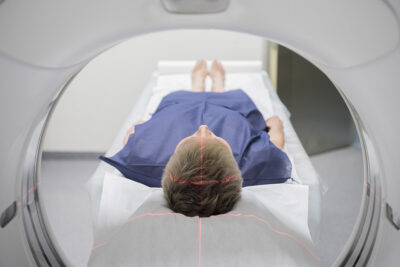
Root Causes of Significantly Delayed CT Scans in ED Settings
EDs often experience delays obtaining computed tomography (CT) scans, with some patients waiting multiple hours for the test. This situation causes bottlenecks in patient flow, increasing length of stay and overall ED crowding.
“The patients at the extreme ends of these wait times represent a vulnerable group,” says Bryan Stenson, MD, an emergency medicine attending and associate director of operations at Beth Israel Deaconess Medical Center. Stenson and colleagues analyzed factors linked to delayed CT scans in the ED setting.1 “The goal was to identify major factors, determine which may be modifiable, and use this information to deploy departmental resources to improve CT turnaround time for some patients,” says Stenson.
The researchers analyzed 5,685 CT images performed on 4,344 patients in an urban ED in 2021. CT imaging took a median of 108 minutes to complete from the time of order. Cases in which CT imaging took more than 369 minutes to complete were defined as “outliers,” which comprised 4.2% of cases. Of patients in the outlier group, who had significant delays in CT scans, the researchers identified these five factors:
• medically unstable or behaviorally non-complaint patients;
• issues with intravenous (IV) lines;
• patients with contrast allergies;
• patients with glomerular filtration rate (GFR) concerns;
• delays related to the protocols used for imaging (for example, a request for oral or rectal contrast, or the need for IV contrast).
“A decent portion of these patients had what we deemed to be modifiable factors: IV issues, GFR concerns, or issues with the study protocol,” notes Stenson.
Behaviorally challenging and medically unstable patients made up the largest percentage of patients in outlier cases. Contrast allergies also were a cause for a notable portion of patients with long delays. Despite a robust chart review, a specific cause of delay was unable to be identified in 32.9% of outlier cases.
“As ED providers, we must understand that there are a variety of specific factors that may influence if a patient has a significantly delayed CT scan. The study’s findings pointed to these potentially modifiable factors:
• Protocols regarding difficult IV access. “This may mean early involvement of a specialized IV team in the hospital or the department,” suggests Stenson. It also could be a strict algorithm regarding the number of IV attempts by nursing prior to proceeding to an ultrasound-guided IV.
• Standardized approaches to low GFR patients. “This step would require revisiting each institution’s policy on contrast administration to optimize flow,” explains Stenson. It may be necessary to adjust or revise policies if they are not in line with updated literature. This may include modifying cutoff levels for pre-hydration. “If pre-hydration is still needed, the ED and radiology can work together to best operationalize how this is done and communicated, so as to not slow down the CT throughput,” says Stenson.
At Beth Israel Deaconess Medical Center, the ED worked with radiology to allow for hydration after the CT scan (instead of before) for patients with GFRs between 30 and 45. “For patients with a GFR below 30, we ensured a timely discussion with radiology to confirm IV contrast was truly desired and, if so, we specified a time interval for pre-hydration — all while streamlining communication with automated messages to notify radiology when a patient is ready to be scanned,” reports Stenson.
• Protocol modifications. This refers to looking at which studies truly need oral contrast (which often can lead to prolonged lengths of stay) vs. non-contrast studies, or those with IV contrast alone.
There has been some research demonstrating that the elimination of routine use of oral contrast in abdominal/pelvic CT shortened the length of stay without affecting diagnostic accuracy.2 “So, there may be opportunities to critically assess a department’s overall use of contrast,” notes Stenson.
Overall, the study’s findings underscore the need for EDs to make specific changes to prevent or reduce CT scan delays. “Improvements in these areas may reduce the likelihood of a prolonged CT order-to-performance time for certain patients,” offers Stenson.
REFERENCES
- Dhanik A, Stenson BA, Levenson RB, et al. Root cause analysis of delayed emergency department computed tomography scans. West J Emerg Med 2024;25:226-229.
- Levenson RB, Camacho MA, Horn E, et al. Eliminating routine oral contrast use for CT in the emergency department: Impact on patient throughput and diagnosis. Emerg Radiol 2012;19:513-517.
EDs often experience delays obtaining computed tomography scans, with some patients waiting multiple hours for the test. This situation causes bottlenecks in patient flow, increasing length of stay and overall ED crowding.
Subscribe Now for Access
You have reached your article limit for the month. We hope you found our articles both enjoyable and insightful. For information on new subscriptions, product trials, alternative billing arrangements or group and site discounts please call 800-688-2421. We look forward to having you as a long-term member of the Relias Media community.
